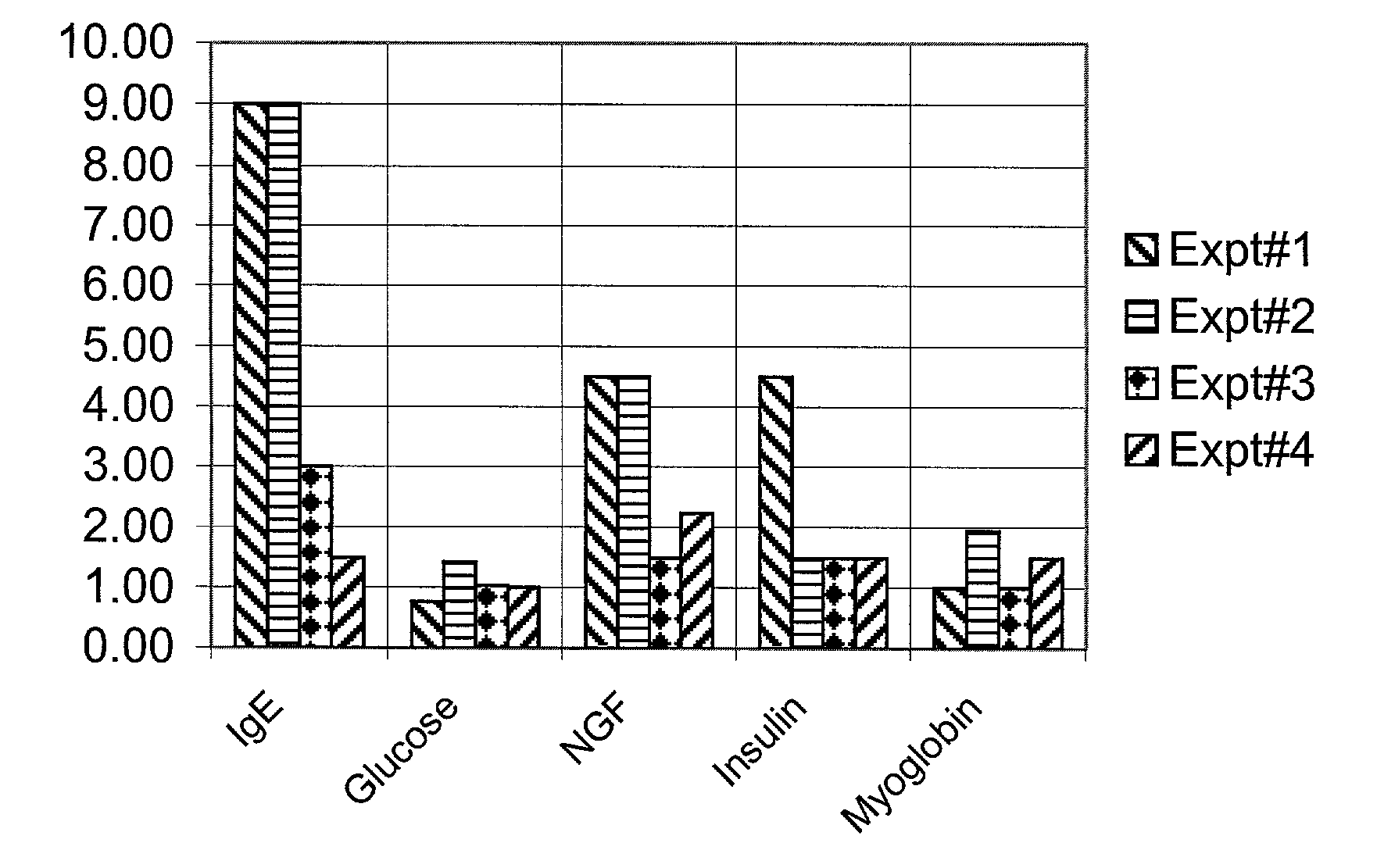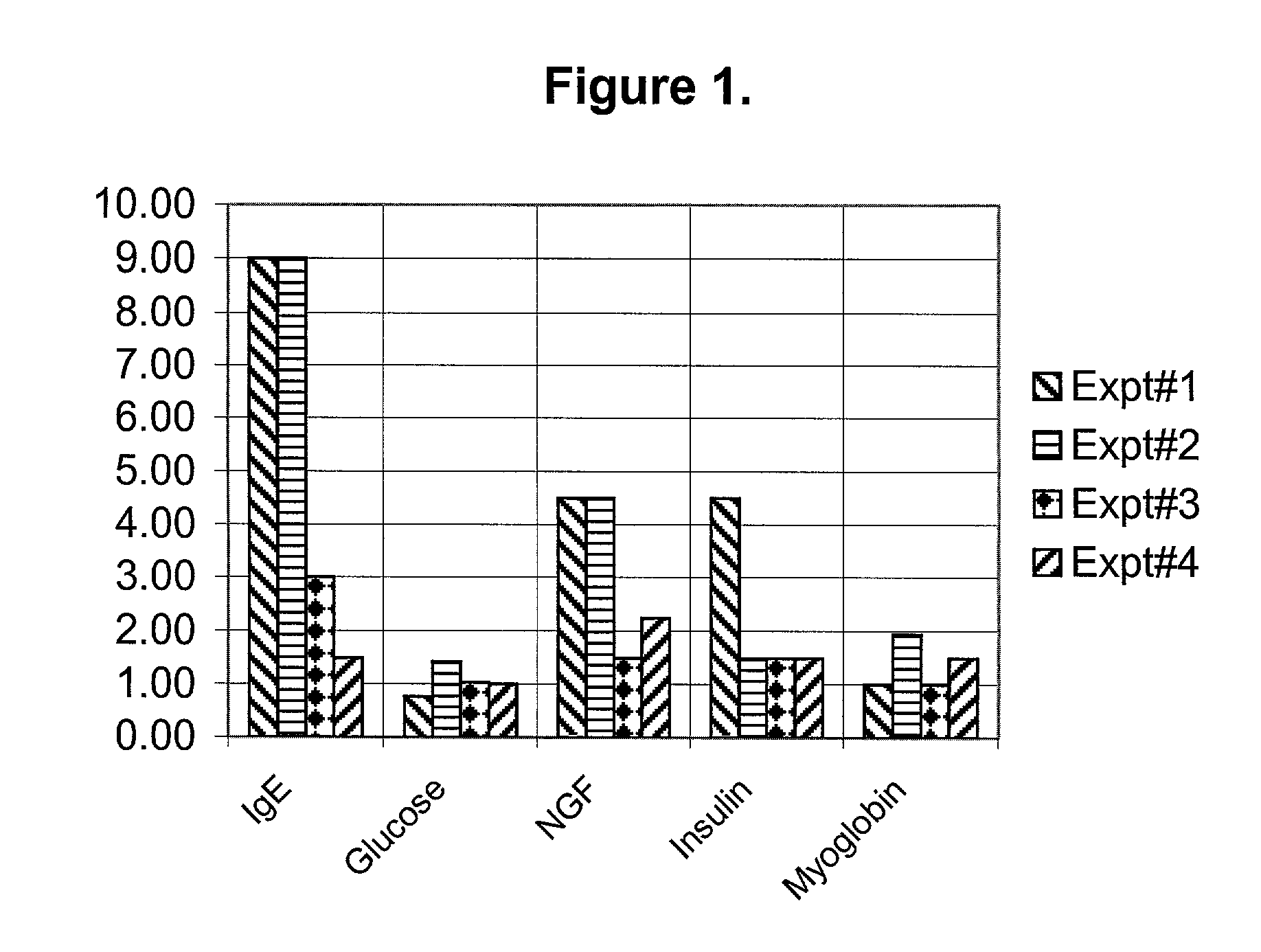Diagnosis and treatment for immunoglobulin E ( IgE) implicated disorders
a technology of immunoglobulin and implicated disorders, applied in the field of diagnosis and treatment of immunoglobulin e (ige) implicated disorders, can solve the problems of high levels of ige, disruption of endogenous homeostasis, anti-ige or anti-idiotypic antibodies, etc., and achieve the effect of reducing the level of serum ig
- Summary
- Abstract
- Description
- Claims
- Application Information
AI Technical Summary
Benefits of technology
Problems solved by technology
Method used
Image
Examples
experiment 1
[0040] The pool of several human salivas was split into two parts. To one part equal volume of PBS was added and to the second part equal volume containing 1 mg / ml of LT-10 was added. The mixtures were incubated at 37.degree. C. for one hour. IgE levels were assayed in both mixtures by usual ELISA test using anti-IgE. It was revealed that IgE level was much reduced in the mixture of saliva and LT-10, in comparison to the mixture of saliva and PBS. This shows the binding of LT-10 to IgE in saliva, the bound IgE is not detected by anti-IgE by ELISA test.
experiment 2
[0041] I placed one ml of water in my mouth and kept it for 15 minutes, after which the mixture with saliva and water was collected. Likewise I placed one ml of LT-10 containing 1 mg / ml and the mixture of saliva and LT-10 was collected. IgE levels were assayed in both mixtures by usual ELISA test. It was revealed that IgE level was much reduced in the mixture of saliva and LT-10, in comparison to the mixture of saliva and water. This shows that the binding of LT-10 to IgE in saliva in mouth.
[0042] So far anti-IgE treatment is advocated only for allergic rhinitis and asthma. After discovering the high levels of IgE implicated for other than asthma disorders, we advocate LT-10 treatment for the disorders where IgE levels are high, those are:
[0043] (1) Type II diabetes (2) Depression (3) various types of Autoimmune disorders and (4) Asthma.
[0044] Currently, diabetes, depression and autoimmune diseases are treated with various drugs. For example, diabetes treated by insulin injections,...
experiment # 2
[0064] Experiment #2: Glucotrol treatment, 10 mgs in the morning and 5 mgs in the evening.
PUM
| Property | Measurement | Unit |
|---|---|---|
| concentration | aaaaa | aaaaa |
| pH | aaaaa | aaaaa |
| concentration | aaaaa | aaaaa |
Abstract
Description
Claims
Application Information
 Login to View More
Login to View More - R&D
- Intellectual Property
- Life Sciences
- Materials
- Tech Scout
- Unparalleled Data Quality
- Higher Quality Content
- 60% Fewer Hallucinations
Browse by: Latest US Patents, China's latest patents, Technical Efficacy Thesaurus, Application Domain, Technology Topic, Popular Technical Reports.
© 2025 PatSnap. All rights reserved.Legal|Privacy policy|Modern Slavery Act Transparency Statement|Sitemap|About US| Contact US: help@patsnap.com


